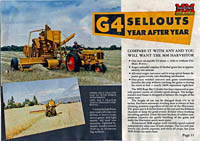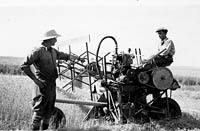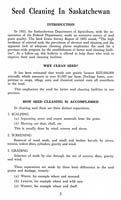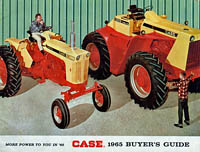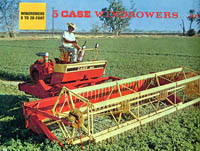4. Machines and More Machines, 1945 – 1975
A Machine for Everything
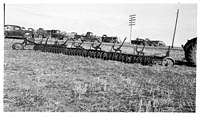 From the 1940s to the 1950s, gold, red and green tractors
grew increasingly popular: the Minneapolis (later Minneapolis-Moline), Case and John
Deere, respectively. In general, between 1941-1951, tractors, combines and trucks
made an appearance on nearly all farms of seven quarter-sections or more, which was a pretty
big farm for that day.
From the 1940s to the 1950s, gold, red and green tractors
grew increasingly popular: the Minneapolis (later Minneapolis-Moline), Case and John
Deere, respectively. In general, between 1941-1951, tractors, combines and trucks
made an appearance on nearly all farms of seven quarter-sections or more, which was a pretty
big farm for that day.
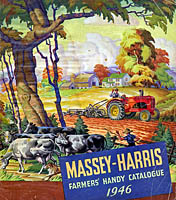 This was followed by an explosion in implements resulted
in a variety of tillage machinery (ploughs, packers, harrows, cultivators, one-ways), grain
drills, swathers, strawbunchers , grain dryers, mowers, rakes stackers, balers, forage
harvesters, bale loaders, rotary mowers to clear the land, spraying equipment, seed-cleaning. All
of this equipment meant more investment by individual farmers, machines that could handle
more land, and farms grew in size far beyond Grandpa’s original quarter-section.
This was followed by an explosion in implements resulted
in a variety of tillage machinery (ploughs, packers, harrows, cultivators, one-ways), grain
drills, swathers, strawbunchers , grain dryers, mowers, rakes stackers, balers, forage
harvesters, bale loaders, rotary mowers to clear the land, spraying equipment, seed-cleaning. All
of this equipment meant more investment by individual farmers, machines that could handle
more land, and farms grew in size far beyond Grandpa’s original quarter-section.
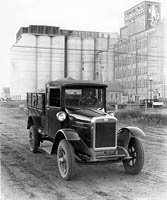 Through the coming decades power steering and hydraulics
made the scene. Special ‘garden’ tractors twinned big brother tractors equipped
with V-8 and diesel engines.Tractors got 4-wheel drive. “The number of manufacturers
dwindled to nine by 1960 and continued to decline during the last half of the twentieth
century as business failures and mergers took their toll on the list of once-prominent
manufacturers.”
Through the coming decades power steering and hydraulics
made the scene. Special ‘garden’ tractors twinned big brother tractors equipped
with V-8 and diesel engines.Tractors got 4-wheel drive. “The number of manufacturers
dwindled to nine by 1960 and continued to decline during the last half of the twentieth
century as business failures and mergers took their toll on the list of once-prominent
manufacturers.”
<http://www.sunnybrookfarmmuseum.ca/history.htm>
The Mid-West belt of the United States continued to supply Canadians with the majority of farm machinery, Canada being its biggest importer.
Refining and Streamlining
Gradually tractors were more streamlined, efficient and middle-sized. Pneumatic seeders, no-till drills, round balers, bale throwers, forage harvesters and feed-processing equipment, manure spreaders and vacuum wagons became part of farm machinery development. Sprays and fertilizers became fully commonplace, issues that the health conscious today question, but productivity was rated top priority.
Interview with Mr. Peter Woroschuk
 Have
a listen to a farmer's memories about the machinery his family used near
Calder, Saskatchewan..
Have
a listen to a farmer's memories about the machinery his family used near
Calder, Saskatchewan..(The controls are for Play / Pause and Stop, and each one lasts around five minutes.)


